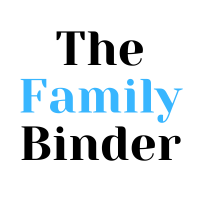Take control of your financial future in 2025, one page at a time. With the economy facing uncertainty and costs on the rise, proactive money management is more important than ever.
This guide is here to show you how a budget planner binder can bring structure and peace of mind to your finances. By following step-by-step strategies, you’ll learn to choose, set up, and personalize your system for maximum results.
You’ll discover how to track spending, achieve your goals, and troubleshoot common hurdles. Ready for financial clarity and a more organized life? Dive in and see how this practical guide will help you take action.
Why Use a Budget Planner Binder in 2025?
Taking control of your finances in 2025 means finding a system that truly works for you. With so many tools available, why does the budget planner binder remain such a powerful choice? Let’s break down the benefits, who can use it, and clear up some common myths.
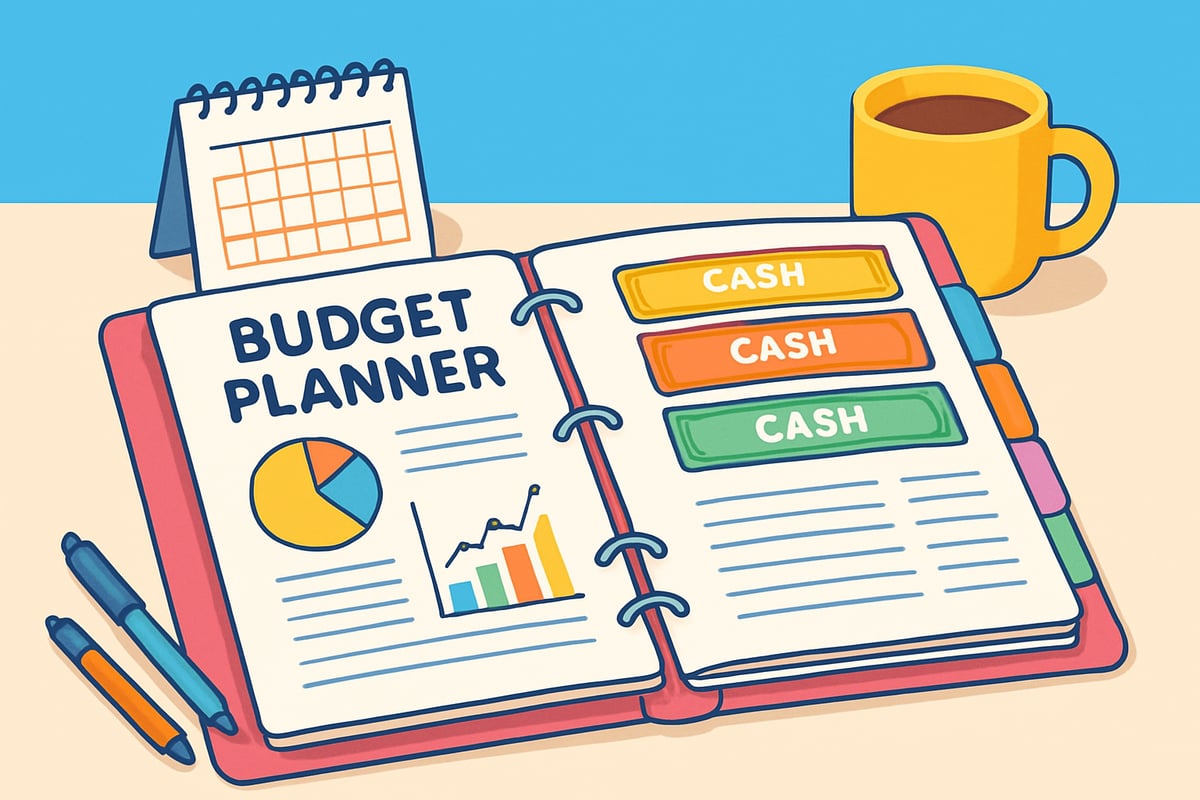
The Modern Financial Landscape
In 2025, managing money is more challenging than ever. Rising living costs and unpredictable markets have made proactive financial planning essential for everyone. While digital tools are widespread, many people are rediscovering the benefits of tangible, paper-based solutions.
A budget planner binder offers tactile engagement, helping you focus without the distractions of apps or notifications. In fact, over 60% of adults say their spending habits improve when using physical budgeting tools, according to industry surveys. Recent research supports this, finding that physical visualizations like binders often enhance comprehension and retention compared to digital-only options (A Comparative Study of Table Sized Physicalization and Digital Visualization).
Key Benefits of a Budget Planner Binder
Why does the budget planner binder stand out? First, it brings all your financial details into one visible, organized space. You can easily flip through sections, update numbers, and spot trends.
Other benefits include:
- Consistency: Encourages regular check-ins and healthy financial habits.
- Customization: Adapt pages and layouts to fit your unique goals.
- Security: No risk of digital breaches, your information stays offline.
These features make the budget planner binder a flexible tool for anyone aiming to take charge of their money.
Who Can Benefit Most?
A budget planner binder isn’t just for finance enthusiasts. It’s designed for a range of users, including:
| User Type | Primary Need |
|---|---|
| Individuals | Track personal expenses |
| Families | Manage shared budgets |
| Freelancers/Small Biz | Monitor irregular income |
| Students/Young Pros | Learn financial responsibility |
If you want more structure, need to coordinate bills, or are just starting to take finances seriously, the budget planner binder is a smart choice.
Example Scenarios
Picture a family using a budget planner binder to keep tabs on bills, grocery spending, and savings goals. Everyone knows where the money is going, reducing stress and arguments.
Or think of a freelancer tracking variable income and quarterly taxes. The budget planner binder helps them see the big picture, plan for lean months, and avoid surprises.
These real-life uses show how adaptable and helpful a budget planner binder can be.
Common Misconceptions
Some think a budget planner binder is outdated. The truth? Paper systems are proven to boost accountability and mindfulness. Digital-only solutions can lead to notification fatigue or distraction, making it harder to stay on track.
Hybrid systems try to blend both worlds, but often end up causing confusion. The key is finding what works for you, and for many, the budget planner binder remains the most reliable choice.
Choosing the Right Budget Planner Binder
Choosing the right budget planner binder can feel overwhelming with so many options available. The right choice sets the foundation for a system that fits your lifestyle and keeps you motivated all year. Let’s break down what you need to know so you can confidently pick the best binder for your needs.
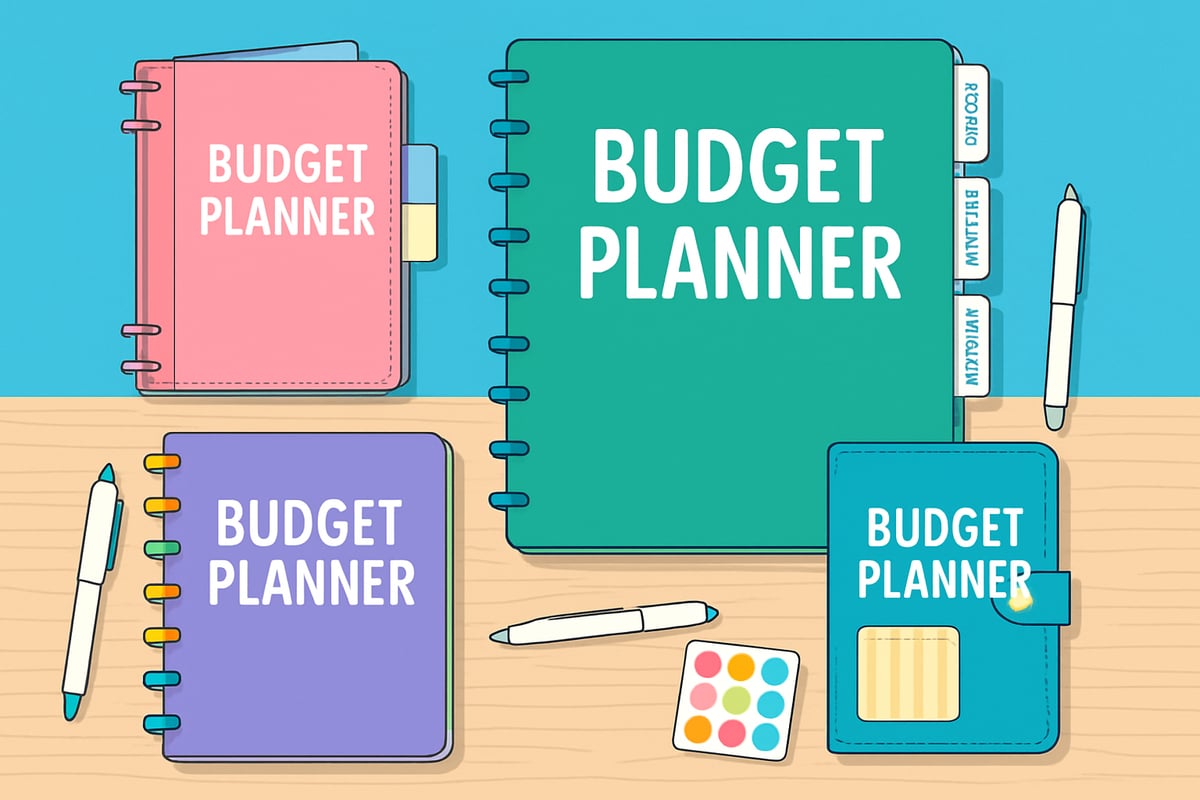
Binder Types and Formats
The first step is choosing a budget planner binder format that matches your planning style. Common options include ring binders, disc-bound systems, and spiral-bound planners. Each brings unique benefits—ring binders are versatile and easy to refill, disc-bound systems allow for smooth page turning, and spiral-bound options are compact.
Consider size, too. A5 and letter sizes offer plenty of writing space, while personal or pocket sizes are more portable. Material choices range from classic leather to fabric, plastic, and eco-friendly covers, letting you balance durability and style. Your budget planner binder should feel good in your hands and fit your everyday routine.
Essential Features to Look For
A high-quality budget planner binder will stand up to daily use. Look for a durable cover, sturdy rings, and refillable pages. Tabs and dividers make it simple to find what you need quickly, while storage pockets are perfect for tucking away receipts and cash envelopes.
Choose paper that is at least 120gsm so your favorite pens and highlighters don’t bleed through. Investing in these features ensures your budget planner binder remains functional and enjoyable, making it easier to stick with your financial goals.
Comparing Popular Brands and Models
When shopping for a budget planner binder, it helps to compare brands for the features you value most. Some brands, like Clever Fox, offer undated inserts for flexibility, while Crossbow Planner Co is known for its A5 compatibility and wide accessory selection.
Prices can vary, so expect basic models to be affordable, while premium options with leather covers or extra features cost more. For a detailed comparison of top picks, check out the 12 best binders for 2025 to see what’s trending this year.
Customization and Personalization
A budget planner binder becomes truly yours when you customize it. Many brands offer monogramming, color choices, and add-on accessories like stickers, dashboards, and bookmarks. These options let you match your binder to your personality and planning needs.
Use color-coding, tabs, and decorative elements to make your binder visually appealing and easy to use. Personal touches can keep you inspired and organized throughout the year.
Example: Matching Binder to Lifestyle
The best budget planner binder is the one that suits your life. Busy parents may prioritize durability and lots of sections for different expenses. Minimalists might prefer streamlined layouts with only the essentials. Students often need lightweight, portable binders that fit in backpacks.
Think about your daily routine and what features matter most. This way, your binder will support your financial journey, not weigh you down.
Step-by-Step Guide: Setting Up Your Budget Planner Binder
Ready to transform your finances? Setting up a budget planner binder is the first step toward a more organized, stress-free approach to money. Follow this detailed guide to build a system that fits your lifestyle, helps you reach your goals, and keeps you accountable all year long.
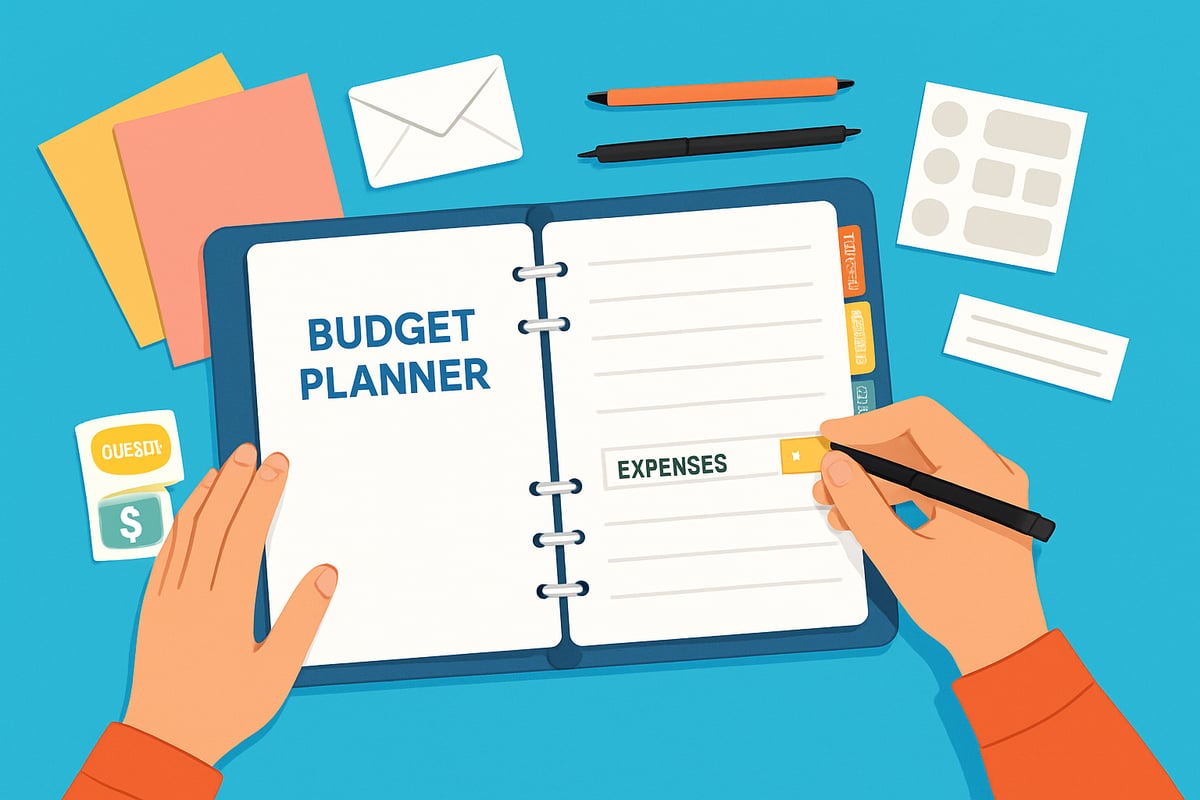
Step 1: Gather Your Supplies
Begin by assembling everything you need for your budget planner binder. Having the right tools on hand ensures a smooth setup and makes the process more enjoyable.
Checklist:
- Binder (ring, disc-bound, or spiral)
- Budget planner inserts (monthly, weekly, trackers)
- Pens and highlighters
- Stickers and tabs
- Cash envelopes
- Calculator
- Storage pockets for receipts
You can find quality inserts and accessories at stationery stores, online shops, or by browsing printable templates. For more inspiration on assembling your setup, check out this practical guide on how to make a budget binder and organize your finances.
Step 2: Organize Sections and Dividers
Structure is key to any effective budget planner binder. Divide your binder into clear sections so you can easily find and update information.
Recommended sections:
- Monthly calendar
- Income tracker
- Expense tracker
- Bills checklist
- Debt tracker
- Savings goals
- Receipts pocket
Using dividers or tabs, label each section for fast navigation. Consider color-coding tabs for different categories. For example, Crossbow Planner Co’s 12-month undated layouts make it easy to visualize the entire year at a glance.
Step 3: Establish Your Financial Goals
A budget planner binder works best when you set clear objectives. Use the SMART framework: Specific, Measurable, Achievable, Relevant, and Time-bound.
- Annual goals: “Pay off $3,000 credit card debt by year-end.”
- Monthly goals: “Save $400 for travel each month.”
Write your goals in the dedicated section of your binder. Referencing inserts like “Yearly Financial Goals” can help you stay on track and motivated as the months progress.
Step 4: Track Income and Expenses
Recording every dollar in and out is the backbone of the budget planner binder method. Set up pages to log all income sources, including salary, side gigs, and passive earnings.
Expense categories:
- Fixed (rent, subscriptions)
- Variable (utilities, groceries)
- Discretionary (dining, entertainment)
Use expense tracker pages to jot down each transaction. For recurring bills, a checklist helps you avoid missed payments and late fees. Review these pages regularly to spot patterns and find areas to save.
Step 5: Create Your Budget
Now it’s time to build your actual budget. Start by calculating your total monthly income and list all monthly expenses from your budget planner binder.
Allocate funds to:
- Savings
- Debt repayment
- Discretionary spending
Use review pages to compare your plan with actual spending, adjusting allocations as your needs change. This process helps you stay proactive and flexible with your finances.
Step 6: Implement Cash Envelope System (Optional)
If you want extra control over your spending, try the cash envelope system within your budget planner binder.
How to set up:
- Create labeled envelopes for categories like groceries, entertainment, and dining out.
- Withdraw cash and place the budgeted amount in each envelope.
- Spend only what’s inside each envelope for the month.
This method is highly effective for managing discretionary spending and preventing overspending in key areas.
Step 7: Schedule Regular Check-Ins
Consistency is crucial for success with your budget planner binder. Set aside time each week or bi-weekly for a review session.
Use your monthly review pages to:
- Track progress toward goals
- Adjust your budget as needed
- Celebrate financial wins
Consider pairing binder reviews with digital calendar reminders to keep yourself accountable. Regular check-ins help you adapt as life and finances evolve.
Customizing and Personalizing Your Budget Planner Binder
Personalizing your budget planner binder is the secret to making it work for your unique lifestyle. Customization transforms a basic tool into a powerful ally for money management. Let’s explore how you can truly make your budget planner binder your own.
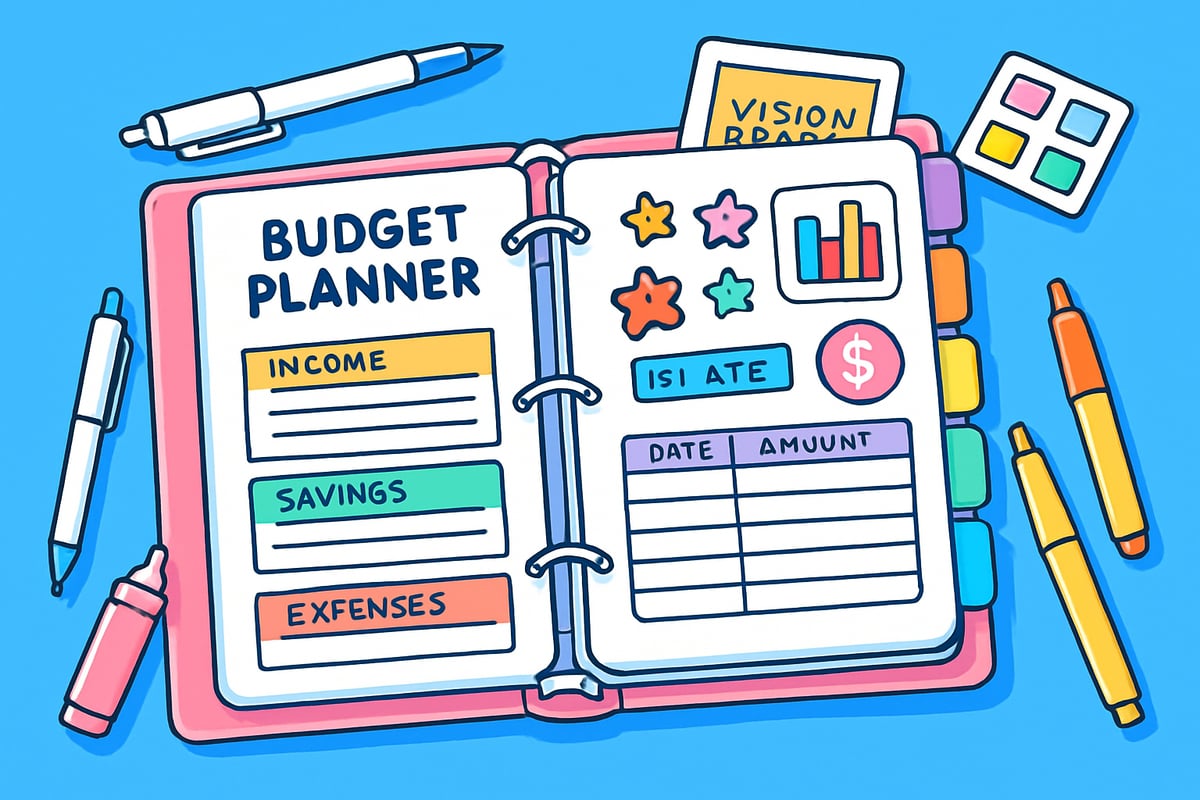
Adding Functional Inserts and Accessories
The effectiveness of your budget planner binder often starts with the right inserts and accessories. Popular add-ons include bill trackers, debt payoff charts, savings logs, and investment record sheets. These inserts help you break down complex financial activities into manageable tasks.
Dashboards and dividers improve workflow, letting you flip quickly between sections. Storage pockets hold receipts and cash envelopes, making the budget planner binder practical for everyday use. For more ideas on structuring your binder, check out these binder budgeting methods for inspiration and step-by-step advice.
Visual Motivation and Accountability
A budget planner binder can be a motivational tool, not just a record keeper. Add a vision board or inspirational quotes to keep your financial goals front and center. Color-coding categories with highlighters or stickers creates instant clarity and makes the process more engaging.
Milestone trackers and progress charts help you celebrate small wins, building positive momentum. For visual cues, consider sticker packs and decorative dashboards that make your budget planner binder inviting to open and use.
Adapting to Changing Life Stages
Your budget planner binder should evolve as your life does. Adjust sections when you experience big changes, such as welcoming a new baby, buying a home, or switching careers. During holidays, back-to-school, or summer travel, add seasonal budgeting pages to stay on track.
The flexibility of a budget planner binder means you can easily add or remove inserts as needed. This adaptability ensures your system always reflects your current financial situation and priorities.
Tips for Staying Consistent
Consistency is key to getting results from your budget planner binder. Place it somewhere visible, like your desk or kitchen counter, so you’re reminded to use it daily. Schedule regular review sessions—weekly or bi-weekly—and set digital calendar alerts if needed.
Keep your supplies handy: pens, stickers, and fresh inserts should be within reach. The more accessible your budget planner binder, the more likely you are to stick with your routine and reach your financial goals.
Example: Family vs. Individual Customization
Customization depends on whether your budget planner binder is for solo use or for the whole family. Shared family binders benefit from extra dividers, labeled sections for each member, and group goal trackers. Everyone can add receipts or notes, making collaboration easy.
For individuals, a more streamlined layout with only the essential sections can boost focus and reduce clutter. No matter your setup, a personalized budget planner binder becomes a reflection of your financial journey, helping you stay accountable and organized.
Advanced Strategies for Maximizing Your Budget Planner Binder
Ready to level up your budget planner binder? Advanced strategies can help you unlock deeper financial insights and reach big goals faster. By layering new techniques onto your existing system, you can turn your budget planner binder into a powerhouse for financial clarity and motivation. Let’s explore how to integrate digital tools, analyze trends, plan for the future, involve your family, solve common obstacles, and celebrate real-life wins.
Integrating with Other Financial Tools
Combining your budget planner binder with digital tools brings the best of both worlds. Use apps for bank syncing or automated alerts, but let your binder handle goal-setting, reflection, and detailed tracking. This hybrid approach reduces digital fatigue and keeps your financial plan organized.
For example, you might use a budgeting app to download transactions, then record highlights and summaries in your budget planner binder. This keeps you hands-on and less distracted by notifications. Discover more on how to merge analog and digital methods in this guide to financial planning binder strategies.
Deep-Dive Tracking and Analysis
Your budget planner binder can do more than just log expenses. Use monthly and yearly review pages to spot spending patterns, track net worth, and monitor investment growth. Create tables to compare progress by month or quarter.
Sample Table:
| Month | Savings Added | Debt Paid | Net Worth Change |
|---|---|---|---|
| January | $500 | $200 | +$700 |
| February | $450 | $250 | +$600 |
By making these comparisons, your budget planner binder helps you visualize long-term progress, making it easier to adjust course when needed.
Long-Term Planning and Goal Setting
Think beyond monthly budgets. Use your budget planner binder to map out 3-, 5-, and 10-year goals. Whether saving for a home, planning for retirement, or funding a dream vacation, break big targets into smaller steps.
Use a dedicated section for milestone planning. Write down your “why,” set deadlines, and update your progress regularly. This keeps your ambitions front and center, and your budget planner binder becomes a motivating roadmap for your financial journey.
Involving Family Members and Accountability Partners
A budget planner binder is even more powerful when used as a team. Create shared sections for joint goals, expenses, and family meetings. Each member can add their input, making budgeting a collaborative process.
For tips on making family finances easier to manage, check out these actionable family financial planner tips. When everyone is involved, the budget planner binder turns into a tool for building trust and transparency at home.
Troubleshooting Common Pitfalls
Even the best budget planner binder systems face challenges. You might lose motivation, miss a check-in, or get thrown off by an unexpected bill. To overcome these hurdles, schedule regular, short review sessions. Keep your binder visible and accessible.
If you fall behind, don’t abandon the system. Use a simple checklist to catch up, and remind yourself that progress matters more than perfection. Your budget planner binder is a tool for growth, not judgment.
Example: Success Story
Meet Sarah, a freelancer who struggled with inconsistent income and rising debt. She committed to a budget planner binder in 2024, tracking every invoice and payment. By setting clear savings goals and reviewing her finances weekly, Sarah paid off $10,000 of debt within a year.
Her story shows that with dedication and the right budget planner binder strategies, anyone can take charge of their financial future.
Maintaining and Updating Your Budget Planner Binder
Keeping your budget planner binder up to date is key to lasting financial clarity. Routine maintenance helps you stay on track with goals and adapt to life's inevitable changes. Here's how to make sure your binder evolves with you year after year.
Monthly and Yearly Reviews
Set aside time each month to review your budget planner binder. Look over income, expenses, and savings progress. Use review pages to celebrate wins and spot areas for improvement.
At the end of the year, conduct a more thorough check. Compare your annual goals with what you achieved, and adjust plans for next year. For more tips on this routine, see How to Use a Budget Binder to Manage Your Money.
Refreshing Inserts and Supplies
A well-kept budget planner binder needs fresh inserts and supplies. Replace or refill pages when you run out or if your needs change. Common items to refresh include:
- Monthly calendars
- Expense trackers
- Bill checklists
- Savings goal sheets
Quality refills, like those from Crossbow Planner Co, keep your binder looking sharp and functional. This step ensures your budget planner binder always meets your needs.
Archiving Past Records
As months pass, your binder will fill with completed pages. Store these records in a safe place for future reference, especially for tax season. Consider scanning important documents and saving them digitally.
Research on adopting personal electronic records shows that combining physical and digital storage offers convenience and security. This hybrid approach complements your budget planner binder workflow.
Adapting to Life Changes
Life events like a new job, a baby, or moving can shift your financial priorities. Update your budget planner binder sections to reflect these changes. Add new categories or remove old ones as your situation evolves.
During unexpected events, such as medical emergencies or windfalls, use your binder to plan and adjust budgets. Staying flexible keeps your system relevant.
Sustainability and Longevity
Choose refillable and eco-friendly options to extend your budget planner binder's life. Durable covers and sturdy rings help the binder last for years.
Regularly check for wear and replace parts as needed. By maintaining your binder, you invest in a tool that supports your financial journey for the long haul.
Now that you have a clear roadmap for organizing your finances in 2025, why not put it into action? With The Family Binder, you’ll have everything you need to keep your accounts, insurances, home info, and even your family’s estate plans all in one place. It’s editable, printable, and designed to make your life easier—so you can focus on what matters most. If you’re ready for peace of mind and total financial clarity, let’s take the next step together.
Download Now
